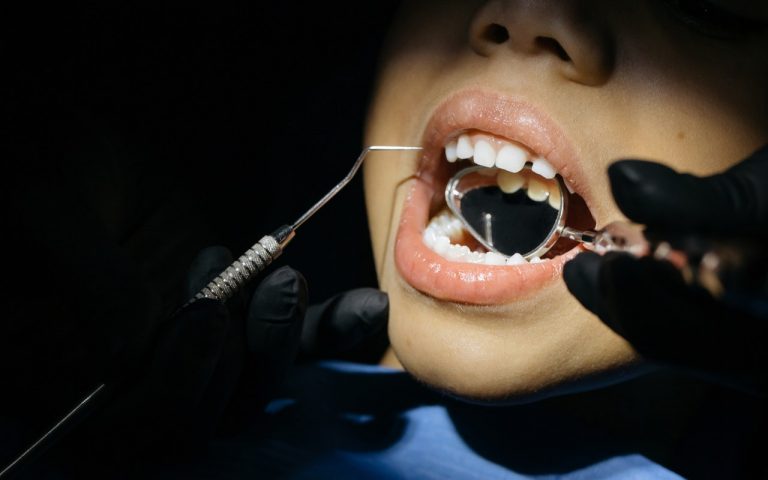Dental veneers to beautify the smile
In recent years, dental veneers have met with growing success with the French, who are increasingly concerned about displaying a beautiful smile. What can we expect? Everything you need to know before starting…
WHAT EXACTLY ARE VENEERS?
Very thin shells (0.6 to 0.7 mm thick), which stick to the visible part of the teeth to improve their appearance, a bit like false nails. Most of the time, they are made of ceramic, a material compatible with living tissues, endowed with optical and mechanical properties close to those of natural teeth. There are also composite (resin), but often less durable and with a less attractive finish.
WHO ARE THEY FOR?
Veneers are an effective solution for those who want to find a nice smile by masking the defects of one or more teeth: too pronounced shade, slight malpositions (spacing, overlapping…), abnormal shape (too short, cracked… . ). Of course, this technique only concerns visible teeth: incisors and canines, even premolars.
WHAT IS THE ADVANTAGE COMPARED TO OTHER TREATMENTS?
Veneers give better results than traditional whitening. Especially if the teeth have a very pronounced discoloration due to taking antibiotics such as tetracyclines. In this case, lightning is not enough, and veneers are a very effective solution. Compared to crowns, they cause less loss of thickness at the level of the tooth, even if their installation requires slightly “cutting” it: 10% less, against 60%. Finally, unlike conventional orthodontic treatment, veneers make it possible to remedy a minimal spacing of the teeth without dental braces. Another advantage: they make it possible to correct, in a single treatment, several associated anomalies, such as yellow, spaced, or too long teeth.
ARE THERE ANY CONTRAINDICATIONS?
This technique is not always possible: it is necessary to opt for a crown if the teeth are very damaged. Ditto if they are very badly positioned: dental braces are essential. Also to be avoided if the teeth are very worn by the abuse of acidulated products (lemon juice, cola drinks, etc.), the laying of veneers requires a minimum of enamel.
HOW MANY SESSIONS SHOULD BE PLANNED?
Two or three, about an hour each. The first appointment allows the patient and the practitioner to establish an “aesthetic project” that describes the different modifications to be made to the teeth to be treated: lengthen or shorten them, give them volume or not… During the second session, the practitioner cuts the teeth and places transitional veneers. On the third, he sticks to the final facets. This last session is the longest: to bond six dental veneers, it takes… three to four hours!
HOW ARE THEY SET UP?
The tooth must first be prepared. The dentist, therefore, begins by cutting the enamel, to create a surface on which the glue can “take”. Then he fixes the veneer under local anesthesia, to avoid any instantaneous movement.
CAN WE SEE THE RESULT BEFORE THE FINAL INSTALLATION?
Some dentists can show it on a screen because they are equipped with image processing software. But more often than not, they proceed with a “mask”, a kind of molding that they make from the impressions of the mouth, and in which they integrate all the desired modifications. This method gives the patient a fairly accurate idea of the final result. And it allows the dentist to carry out tests in almost real conditions.
HOW MUCH DOES A COMER COST?
From 700 to 1,400 €: This is the price (not reimbursed by social security) of a ceramic veneer. It varies according to the expertise of the practitioner, his reputation, the city…
CAN WE BE DISAPPOINTED?
Dental veneers bring luminosity to the smile and the aesthetic result is most often breathtaking. But, before starting, you have to make sure that your wishes are achievable, and validate with the dentist all the modifications to be made. Because once the teeth are cut, there is no going back!
WHAT IS THEIR LIFESPAN?
The majority of clinical studies show that 95% of the veneers are in place after twelve years. By way of comparison, the duration of a crown is ten years on average; and that of bleaching is from three to six months. In addition, we can, if necessary, put new ones afterward.
DOES THEIR MAINTENANCE REQUIRE SPECIAL PRECAUTIONS?
None, apart from impeccable oral hygiene, with careful brushing two or three times a day and scaling once or twice a year. Their lifespan depends on it. In case of bruxism(grinding or excessive clenching of the teeth during sleep), it is essential to wear a gutter for night protection. Because the friction is also exerted on the facet, which risks coming off.
AND PORCELAIN?
Dentists also offer porcelain veneers 0.2 mm thick. They arise without the prior size of the teeth. As a result, their implementation is simpler (two sessions, instead of three). On the other hand, they have fewer shades and brightness and are therefore less aesthetic. And they are not indicated in the case of prominent teeth or inclined forwards because there is then a risk of “over volume”.

